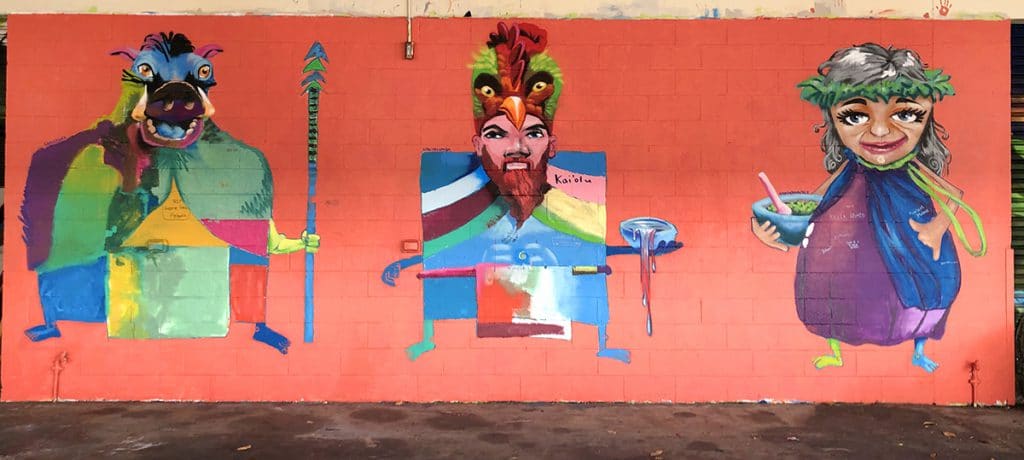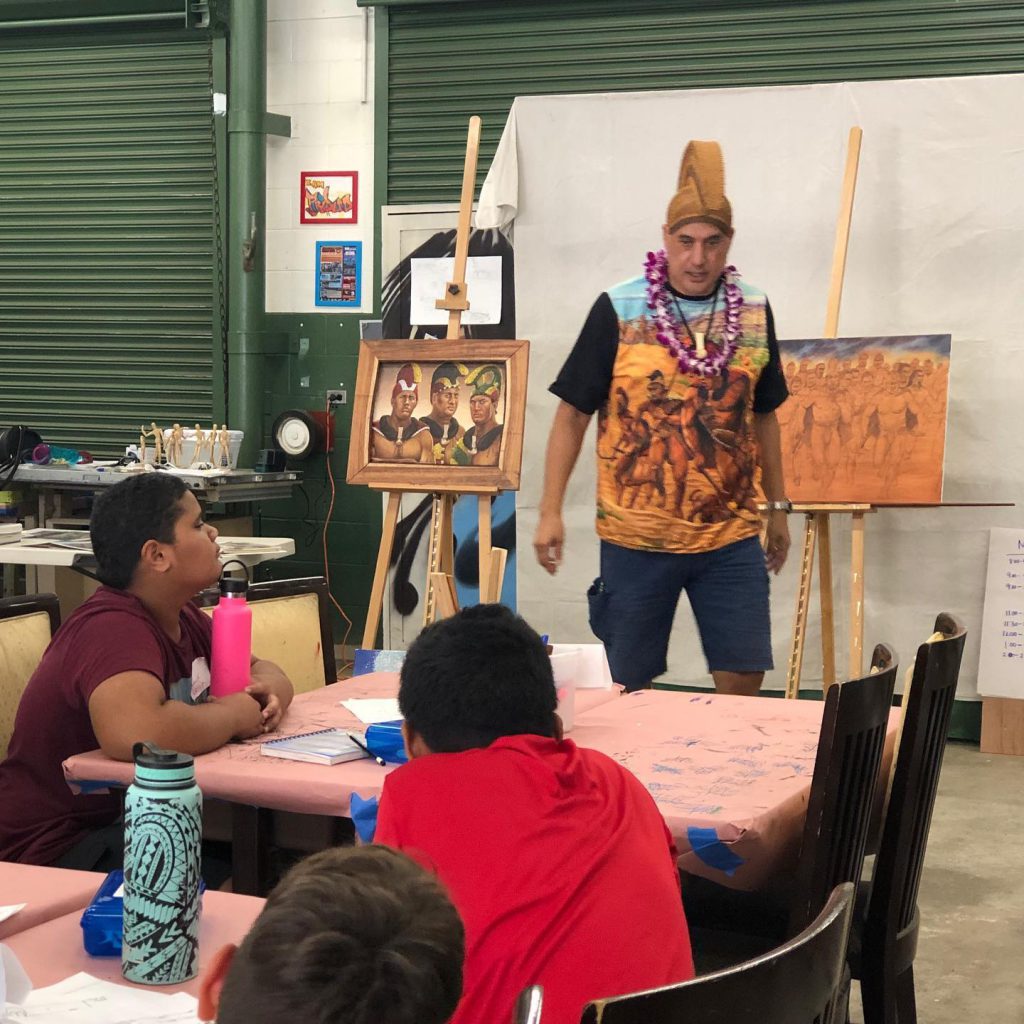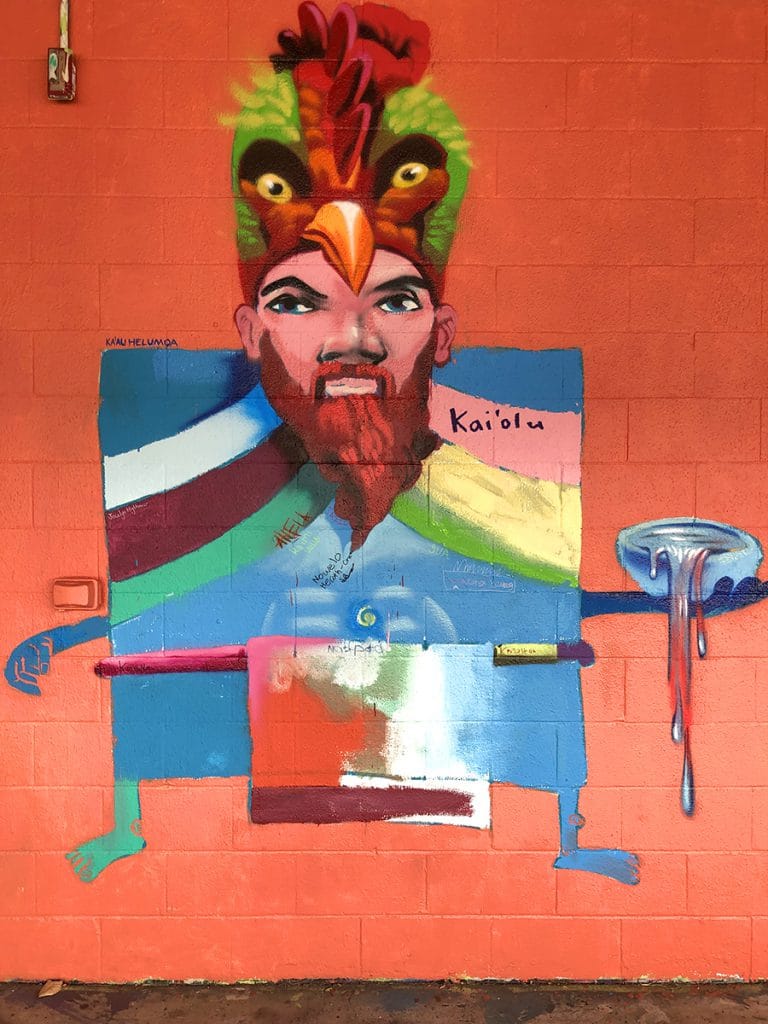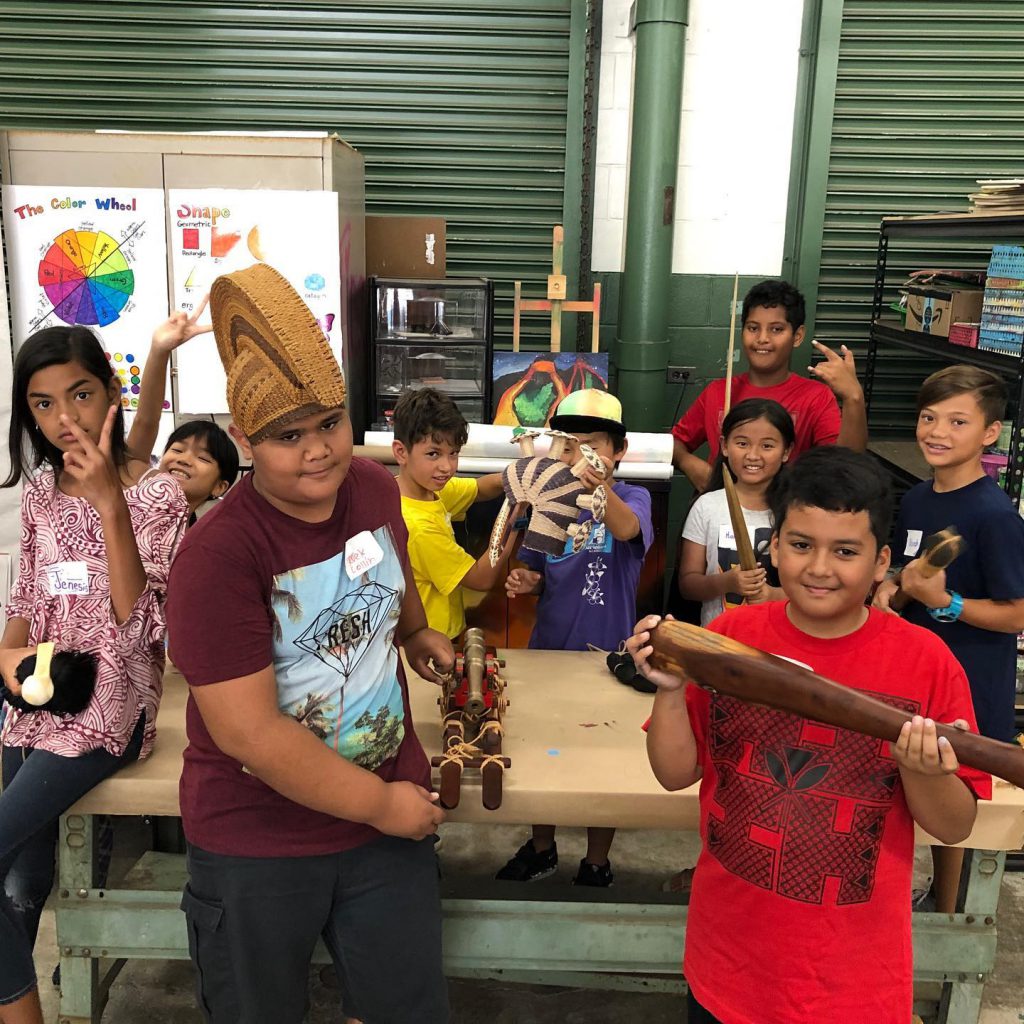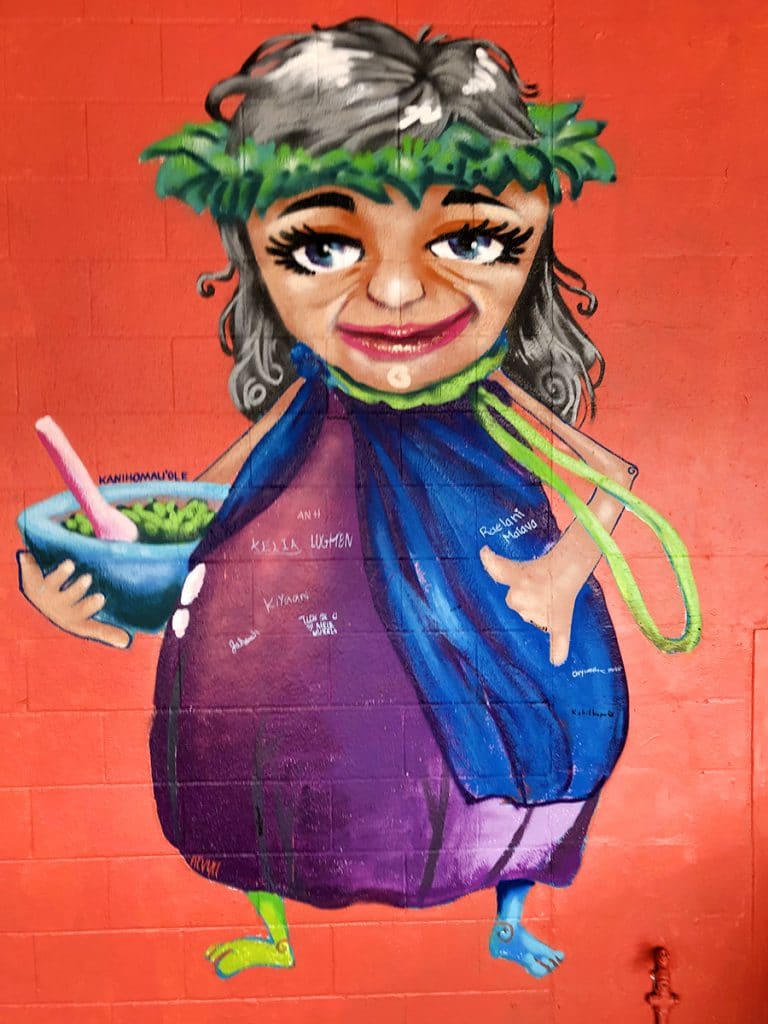Our Mele Murals Summer Program finished this last mural in the last week of the program with Uncle Pomai, Uncle Estria, and Hālau Pāheona kumu, Lacey Evans.
This mo‘olelo is about King Kakuhihewa, the 15th aliʻi ʻaimoku (ruling chief) of Oʻahu, and the location of his court in Waikiki. Since the home of our Hālau Pāheona and Mele Murals office is located at Kaimukī High School, our location falls in the same ahupua‘a (land division) as Waikiki. Our summer haumāna (students) were researching about this mo‘olelo and some of the interest was carried after a class with ‘Anakala Brook Kapukuniahi Parker. Kumu Kaleo Hanohano Akim and Uncle Estria relayed the following mo‘olelo to the keiki.
‘Anakala Brook Parker shows our summer haumāna what the base structure of the mahiole (Hawaiian helmet for warriors and royalty), what it represents, and what it means to wear it.
King Kakuhihewa encounters a supernatural rooster named Ka’auhelemoa, who lived in Ka‘au Crater in Pālolo valley. Ka’auhelemoa flew down to Helemoa in Waikiki to challenge Kakuhihewa. Furiously scratching into the earth, Ka’auhelemoa suddenly vanished. Kakuhihewa took this as an omen so he ordered his people to plant a coconut tree at the exact site upon which Ka‘auhelemoa had disappeared. The coconut tree grew to be the tallest in the area and is said to be the parent of what would become an entire grove of ten thousand coconut trees. This area of the āina became known as Helumoa, meaning “chicken scratch.” The coconut grove that would later be called the King’s Grove, or the Royal Grove, and would be cited in numerous historical accounts for its pleasantness and lush surroundings.
Our Summer Program haumāna learn about the ancient Hawaiian weapons of ikaika and ali‘i from ‘Anakala Brook Parker.
The second mo‘olelo that our haumāna researched starts with Ka’auhelemoa, being raised by his tutu (grandmother), Kanihomau’ole. The hog child kupua (supergod), Kamapua’a, went up to Pālolo to tell Tutu Kanihomau’ole that he wanted to kill and eat Ka‘auhelmoa.
Tutu Kanihomau’ole tells Kamapua’a that if he was going to eat him “You have to eat what you kill.” A interpretation of what his Tutu says is that if Kamapua’a defeats him, he will have to take over his kuleana, and lead the people of the valley. At the height of the two fighting, Ka’auhelemoa dies at a spring at Ka’au Crater, but it is not certain that Ka’auhelemoa dies at the hand of Kamapua’a. In the end, Kamapua’a never got to eat Ka’auhelemoa.
What we take from this is that Kamapua’a & Ka’auhelemoa are fighting because they love the people and they both want what’s best for the people, a mo’olelo about love and lahui.
All the water from the spring turned red like Ka’auhelemoa’s blood. The strange myth about this bloody spring water is that if you try to put some of the red water into a clear bottle the water does not appear red. It appears as a regular color of water.
In addition, the keiki wanted to write little messages on the wall about what “Aloha” means to them and sign the mural with their names. Mahalo again to Brook Kapukuniahi Parker, Uncle Estria, and Kumu Kaleo for sharing your mana‘o and knowledge with our haumāna. Mahalo to all the parents, sponsors, supporters, staff and parents that made this past Mele Murals Summer Program a success! We hope to see you again next summer!

